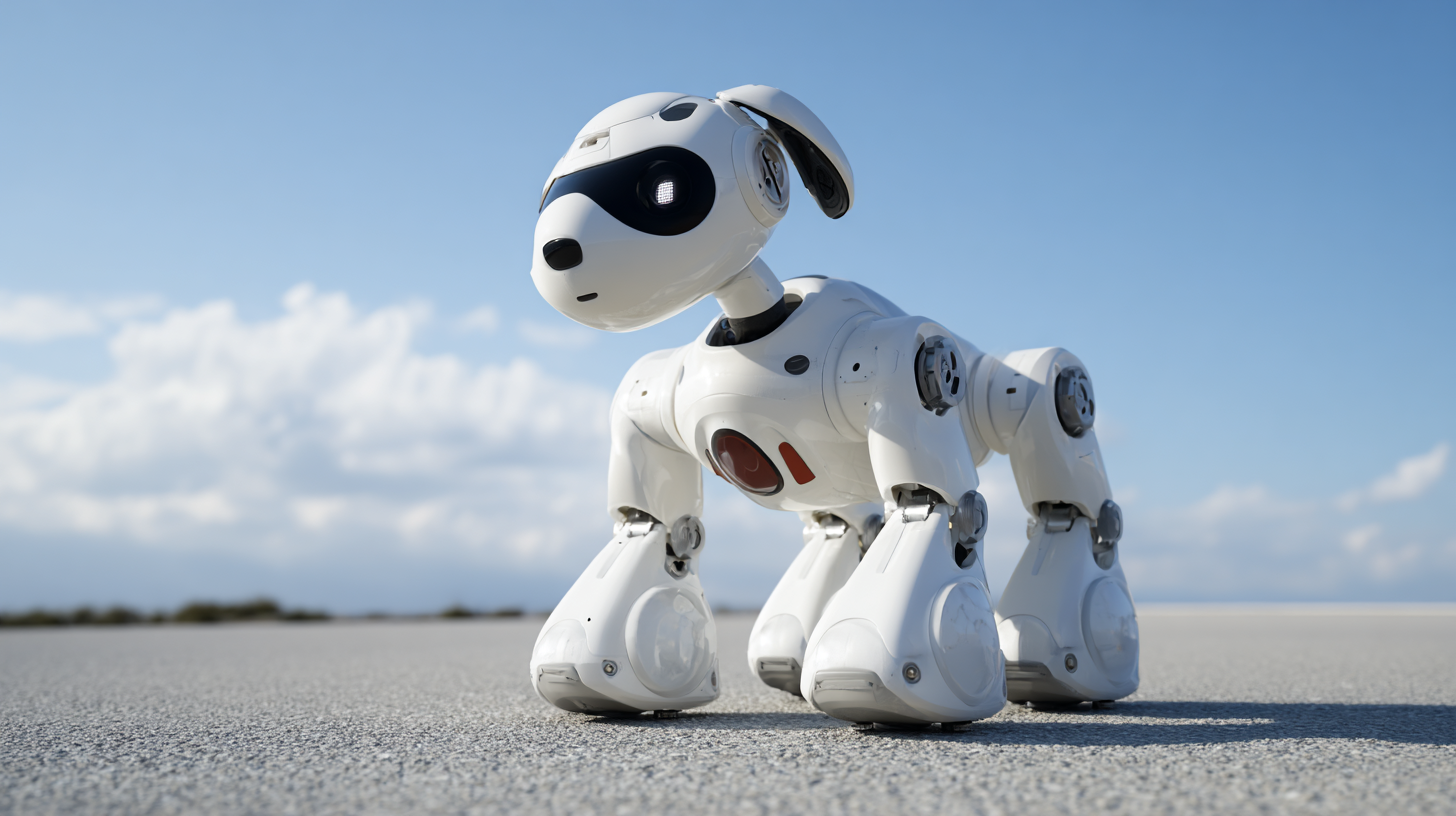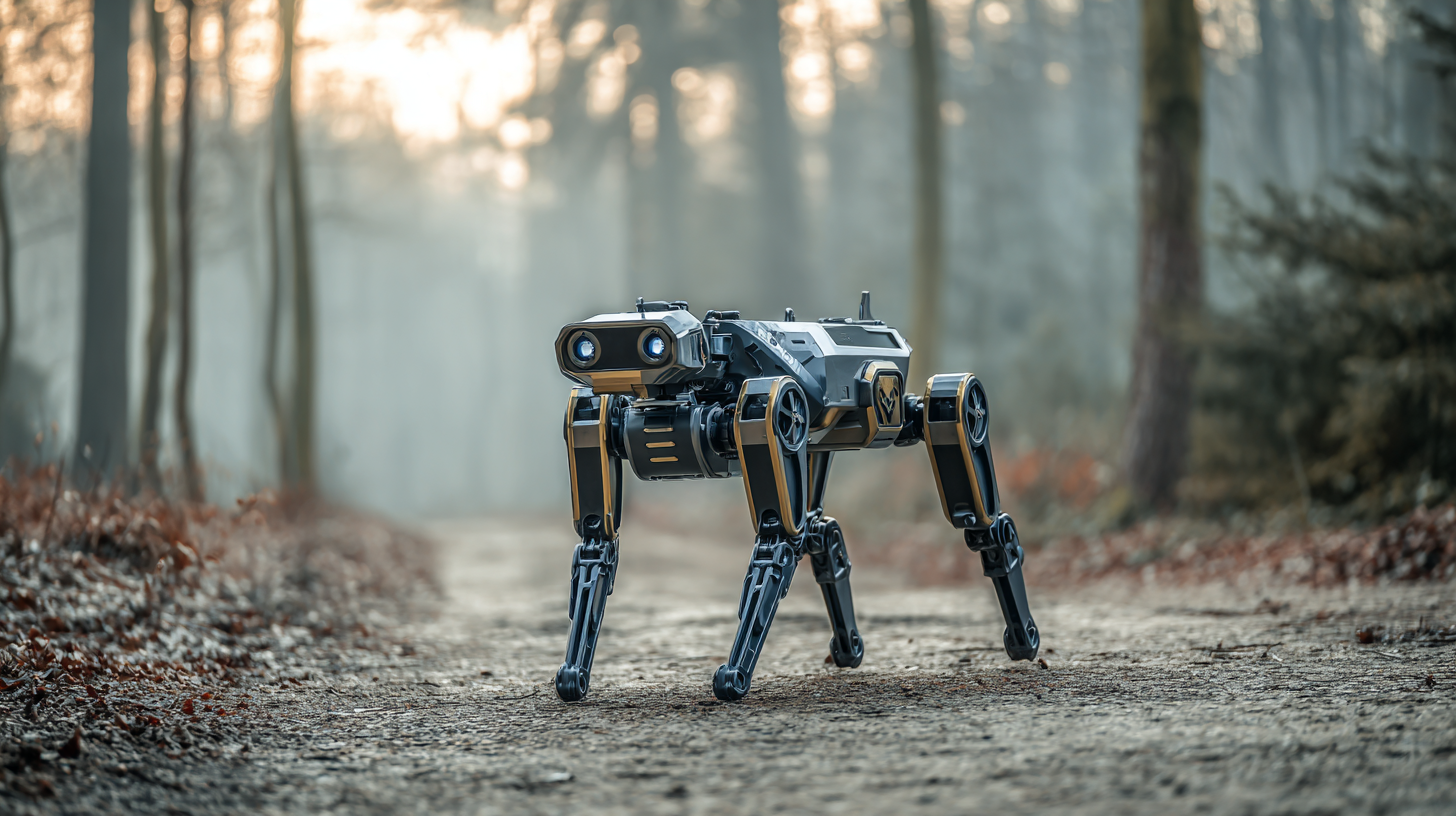As the robotics industry continues to evolve, the demand for innovative solutions is on the rise, with the market for walking robot dogs expected to reach $5.4 billion by 2025, according to a recent report by MarketsandMarkets. These sophisticated walking robot dogs are not only captivating for personal use but are becoming essential tools in various sectors such as healthcare, security, and entertainment. Businesses looking to invest in walking robot dogs must consider key strategies to source the best models that meet their needs. With advancements in AI and machine learning, these robots are equipped with enhanced mobility, real-time decision-making capabilities, and adaptability to diverse environments. Therefore, understanding the factors that influence sourcing decisions is critical for organizations aiming to leverage this cutting-edge technology to improve operational efficiency and customer engagement.

When considering the best walking robot dog for your business, it’s essential to first identify your specific needs. Different industries may require various functionalities from robotic solutions. For instance, businesses in logistics may benefit from a robot dog that can integrate with AI systems to manage and transport packages effectively. Similarly, companies in security or surveillance might prioritize a model equipped with advanced sensing capabilities to patrol areas and detect hazards. Understanding the unique challenges and tasks within your business context is crucial to making an informed decision.
The recent advances in robotics illustrate the versatility and potential applications of walking robot dogs. With innovations like smart perception systems and vacuum-powered capabilities for lifting and moving loads, these robots are poised to transform routine operations effectively. For instance, some robots are already being utilized to keep runways clear of debris, showcasing their ability to enhance safety and efficiency in demanding environments. By aligning the features of a walking robot dog with the specific needs of your business, you can maximize productivity while reducing the burden on human employees.
This chart compares various features of walking robot dogs, highlighting factors such as battery life, speed, weight, price, and customization options which are crucial for businesses considering procurement.
When selecting a walking robot dog for your business, evaluating its features and capabilities is crucial. Start by assessing the robot's mobility and agility. A well-designed robot canine should navigate various terrains smoothly, whether indoors or outdoors. Look for models that offer advanced locomotion systems, allowing for natural movements like walking, running, and even climbing over obstacles. These capabilities will enhance user interaction and allow the robot to perform tasks effectively in different environments.
In addition to mobility, consider the robot's sensory and communication features. Intelligent sensors enable the robotic dog to perceive its surroundings and interact with humans and other pets. Features such as voice recognition, obstacle detection, and even social interaction capabilities significantly enhance user experience. Furthermore, programmable behaviors can be a great advantage, allowing businesses to customize the robot's responses and functionalities to suit their specific needs. By focusing on these features, businesses can ensure they choose a walking robot dog that not only meets their operational requirements but also captivates and engages their audience.
| Feature | Description | Importance Rating (1-5) | Average Price Range |
|---|---|---|---|
| Mobility and Terrain Adaptability | Ability to navigate various terrains, including grass, stairs, and uneven surfaces. | 5 | $1,000 - $3,000 |
| Battery Life | Duration the robot can operate before needing a recharge. | 4 | $800 - $2,500 |
| Camera and Sensors | Quality and number of built-in cameras and sensors for obstacle avoidance and monitoring. | 5 | $1,500 - $4,000 |
| Load Capacity | Maximum weight the robot can carry while operating. | 3 | $1,000 - $3,000 |
| AI and Learning Capabilities | Ability to learn from its environment and improve tasks over time. | 4 | $2,000 - $5,000 |
| Communication Features | Ability to interact with users via voice or mobile app. | 4 | $1,000 - $3,500 |
When it comes to sourcing the best walking robot dog for your business, comparing leading brands and models is crucial for ensuring optimal performance. A recent industry report indicates that the market for robotic companions is projected to grow at a compound annual growth rate (CAGR) of 25.2% from 2023 to 2030. This rapid expansion emphasizes the importance of selecting a model that not only meets your operational needs but also stands out in terms of reliability and functionality.
Several top contenders in the robotic dog niche offer varying specifications tailored to different applications. For instance, models designed for companionship often come equipped with advanced artificial intelligence and responsive behaviors, while others aimed at security or assistance feature rugged designs and longer battery life. According to data from consumer reviews, models with integrated sensors and real-time feedback systems tend to outperform their counterparts in user satisfaction ratings. Evaluating these factors will help businesses make informed decisions about which robotic dog will best serve their intended purpose, ensuring both efficiency and that cutting-edge technology aligns with their operational goals.
When sourcing the best walking robot dog for your business, it's crucial to assess the cost versus benefits meticulously. Investing in robotic technology can range significantly, with models priced from a few hundred to several thousand dollars. According to recent reports, organizations are increasingly prioritizing automated solutions, which can yield a return on investment (ROI) of up to 200% over three years. This insight emphasizes the importance of understanding both upfront costs and long-term savings, particularly in operational efficiency and labor costs.

Tips for making informed decisions include conducting a thorough cost-benefit analysis—evaluate not only the purchase price but also maintenance, training, and potential increases in productivity. Moreover, consider leveraging a data-driven decision-making framework to minimize risks and avoid biases. This approach can help illuminate the true financial impact and support strategic planning.
Furthermore, keep in mind that the integration of AI in robotic solutions is reshaping various industries, enhancing efficiency and security. As highlighted in recent studies, businesses that adopt advanced technologies often experience enhanced customer engagement and satisfaction. Thus, aligning your investment in walking robot dogs with your overall business strategy is essential for maximizing their value.
When sourcing the best walking robot dog for your business, the importance of nurturing strong supplier relationships cannot be overstated. A reliable supplier is not just a vendor; they become a crucial partner in your enterprise. Start by thoroughly researching potential suppliers, focusing on their reputation, production capabilities, and the technology they use. Engaging in open communication can help you understand their operation better and create a partnership based on trust and transparency. Strong relationships often lead to better pricing, priority service, and opportunities for customization, which can be vital for your specific business needs.

In addition to supplier relationships, exploring warranty options is essential for ensuring the longevity and reliability of your investment in walking robot dogs. A solid warranty can save your business from unexpected repair costs and downtime. When evaluating suppliers, inquire about their warranty policies, including what is covered and the duration. A comprehensive warranty not only reflects the supplier’s confidence in their product but also provides peace of mind as you integrate these robotic assets into your operations. Be sure to clarify any terms regarding maintenance and support during the warranty period, as this can significantly impact the overall lifecycle of your robotic investment.
